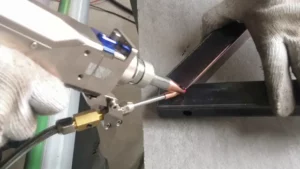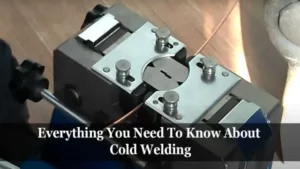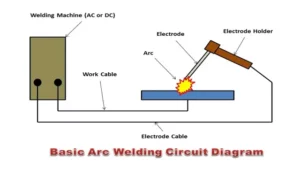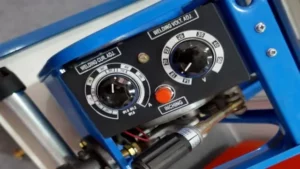PPR Pipe Welding Machine is a crucial tool that ensures a strong and reliable connection between two PPR pipes. It’s the preferred method of joining PPR pipes because of its precision, durability, and speed. However, for those who are new to using this equipment, it can be quite a daunting task to master.
In this blog post, we will take you through each step of the process, from setting up the machine to completing a successful weld. We’ll cover everything you need to know in order to operate and master the PPR Pipe Welding Machine like a pro!
Introduction
If you are planning on using a PPR pipe welding machine, there are a few things you should know to ensure a successful outcome. PPR (polypropylene random copolymer) pipes are commonly used for hot and cold water supply systems, and require specific tools to fuse the joints together securely. To use a PPR pipe welding machine, first, you will need to prepare the pipes by cutting them to the appropriate length and deburring the ends with a utility knife or deburring tool.
Next, you will need to connect the welding machine to a power source and set it to the correct temperature for your specific pipe and fitting. Once the machine has reached the desired temperature, you can begin joining the pipes and fittings together, using a steady hand and a bit of pressure to ensure a proper seal. With a bit of practice and patience, you can easily master the art of using a PPR pipe welding machine for all of your plumbing needs.
What is a PPR Pipe Welding Machine?
A PPR pipe welding machine is an essential tool used for joining polypropylene pipes commonly used in plumbing and other water supply systems. It is a device that heats the two ends of pipes before joining them together, creating a strong, leak-proof weld. The machine operates by heating the pipe ends, softening them, and melting the material in preparation for welding.
The process is quick, efficient, and requires less effort compared to traditional methods such as soldering or fusion welding. PPR pipe welding machines come in different sizes and designs, from hand-held models for small plumbing jobs to larger units for industrial applications. These machines are a must-have for plumbing professionals and DIY enthusiasts looking to install or repair water supply systems.
With the increasing demand for durable, high-quality plumbing systems, PPR pipe welding machines have become an indispensable tool in the plumbing industry.
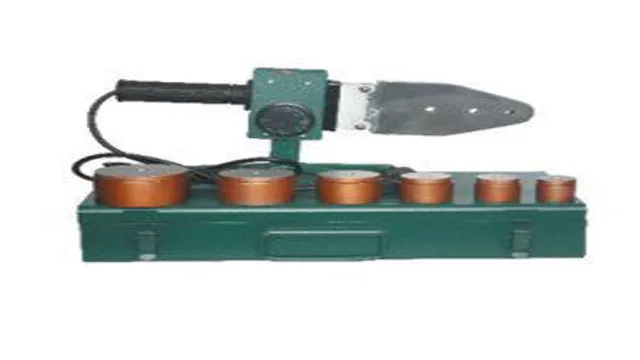
Advantages of using PPR Pipe Welding Machine
PPR pipe welding machine Introduction: If you are looking for durability, strength, and versatility in your pipeline system, then PPR pipes are the perfect choice. The PPR pipe welding machine makes the installation process smooth and effortless, providing you with a leak-free and long-lasting pipeline system. The PPR pipe welding machine has revolutionized plumbing as it allows for the connection of various pipe joints with precision and accuracy.
In this blog, we will discuss the advantages of using a PPR pipe welding machine for your plumbing needs. Advantages of Using PPR Pipe Welding Machine: Saves Time and Money: The PPR pipe welding machine uses an innovative welding technology, which ensures speedy and efficient installation.
It does not require any additional material or fittings, thus cutting down the costs of extra components and installation time. Leak-Proof: PPR pipe welding machine provides a leak-proof connection, which is essential for any plumbing system.
The welding technique creates a seamless bond, which ensures a strong, durable, and long-lasting connection. High-Quality Welds: The PPR pipe welding machine ensures high-quality welds and prevents any damage or defects during the welding process.
It produces a consistent and even spread of heat to ensure a strong and reliable bond between the pipe joints. Safe and Environmentally Friendly: The PPR pipe welding machine is the safest way to connect your plumbing system.
It eliminates the need for dangerous chemicals, solvents, or glues; thus, it is an environmentally friendly option. Versatile: The PPR pipe welding machine can be used to connect various types of pipe joints, such as T, elbow, and straight joints.
Preparing for welding
If you’re planning on welding PPR pipes, the first step is to prepare the materials and equipment you’ll need. You’ll need a PPR pipe welding machine, welding rods, and PPR pipes. Once you have all of these things, it’s important to clean the area where you’ll be working so that there are no debris or other objects that could interfere with the welding process.
After cleaning, use a pipe cutter to cut the PPR pipes to the desired length. The next step is to insert the pipes into the welding machine and heat it up to the recommended temperature. Once the machine has reached the right temperature, you can begin welding the pipes together.
Make sure to follow the manufacturer’s instructions on how to use the machine and welding rods. With the proper preparation and care, you’ll be able to weld your PPR pipes together with ease using a PPR pipe welding machine.
Gather Necessary Materials
Preparing for welding means gathering all the necessary materials for the job. Having everything in place before starting will make the process more efficient and safe. The essential equipment includes a welding machine, protective gear such as gloves, a welding helmet, and safety glasses.
Welding electrodes or welding wire will also be needed, as well as pliers and wire cutters to handle them. Depending on the project, materials to be welded, and the welding technique used, other tools such as clamps may also be required. It’s important to ensure that all equipment is in good condition and properly maintained to avoid malfunctions.
By gathering all necessary materials beforehand, welders can take the first step toward a successful and productive job.
Preparing the PPR Pipes
If you are planning to weld PPR pipes, the first step is to prepare the pipes properly. To begin with, make sure you have all the required tools and equipment, including a welding machine, cutter, and chamfering tool. Before cutting the pipes, measure and mark the required length using a marker or a pencil.
Then, using a cutter, carefully cut the pipes to the desired length. After cutting, use a chamfering tool to smooth the edges and prepare them for welding. This tool will help create the necessary bevel angle and remove any burrs or roughness that could compromise the welding quality.
It’s crucial to prepare the pipes correctly, as a poorly prepared pipe can lead to faulty connections and leaks. By following these steps carefully, you can ensure that your PPR pipes are ready for welding, allowing you to create a strong and reliable connection that can withstand even the toughest conditions.
Using the PPR Pipe Welding Machine
If you’re planning on using a PPR pipe welding machine, it’s essential to know the steps to take to ensure that it’s used correctly. Firstly, determine the correct temperature for your PPR pipe, which can vary depending on the diameter of the pipe. Then, clamp the pipe into place in the welding machine, ensuring that it’s held securely.
Switch on the machine and allow it to heat up to the desired temperature. Once the machine is heated, insert the pipe into the welding machine, and allow it to weld together. After the welding process, switch off the machine and allow it to cool down, then remove the welded pipe.
Note that it’s essential to hold the two pipe sections steady for a few seconds after welding them together to ensure that they bond correctly. If you use your PPR pipe welding machine correctly, it can be a reliable and time-efficient method of welding pipes.
Step-by-Step Instructions
If you’re looking to work with PPR pipes, it’s important to have the right equipment, including a PPR pipe welding machine. Here’s a step-by-step guide on how to use it. First, make sure the machine is plugged in and turned on.
Then, adjust the temperature to the recommended setting for the size and thickness of the pipes you’re working with. You can find this information in your manual or by consulting with a professional. Next, clean the ends of the pipes thoroughly with a cleaning brush and remove any debris or burrs.
This is crucial to get a good, strong weld. Insert the pipes into the welding machine, making sure they are perfectly aligned. Hold them in place firmly until the welding process is complete.
The machine will fuse the two pipes together using high heat and pressure. Once the welding process is done, let the pipe cool down for a few minutes. Then, check the weld visually and make sure it’s strong and free from defects.
If the weld looks good, you can proceed with your next steps. Now, repeat the process for the rest of your pipes, making sure to adjust the temperature and pressure as necessary. Finally, give your pipes a final inspection to make sure everything looks good and you’re ready to go.
By following these simple steps, you can ensure that your PPR pipes are properly welded and ready for use. So, go ahead and get started with your PPR pipe welding machine today!
Common Mistakes to Avoid
When it comes to using a PPR pipe welding machine, there are a few common mistakes that people make that can lead to faulty connections or even accidents. One of the primary mistakes is not properly preparing the surfaces that will be welded. It’s essential to clean the pipes thoroughly and remove any debris or residue before bonding them together.
Another mistake is not setting the welding temperature correctly, which can result in weak connections and leaks. Additionally, it’s crucial to use the correct welding time and pressure to ensure that the weld is strong and secure. By avoiding these common mistakes and paying close attention to the details, you can ensure that your PPR pipe welding projects are successful and reliable.
Conclusion
In conclusion, using a PPR pipe welding machine is a breeze! It’s as easy as pushing a button and watching the magic happen. Just ensure that you have the right temperature setting, the right type of welding head, and that the pipes are clean and dry. Trust us, you’ll be welding like a pro in no time! And when it comes to making permanent connections for your piping needs, there’s no better tool to have in your arsenal than a PPR welding machine.
So go ahead and take the plunge into the world of PPR welding, you’ll wonder how you ever lived without it!”
Safety Precautions
Safety Precautions for Using PPR Pipe Welding Machine Safety is a crucial part of any task, and it is no different when using a PPR pipe welding machine. As you operate the machine, it is essential to follow certain safety precautions to prevent injuries and accidents. First, always ensure that you are wearing the appropriate protective equipment, including goggles, gloves, and a mask.
Secondly, make sure that the machine is set up on a stable surface and not on uneven or slippery ground. Additionally, always check the power source and any extension cords for signs of wear and tear before use. Finally, be cautious when using the machine and keep your hands and fingers away from the heat source to avoid burns.
Always remember that safety is paramount, and taking necessary safety precautions can ensure a successful and injury-free welding experience.
Maintenance Tips
PPR pipe welding machine If you’re looking to use a PPR pipe welding machine, it’s important to keep in mind some maintenance tips to ensure its longevity and optimal performance. One of the most important things to remember is to clean the machine thoroughly after each use. This means removing any residue, debris, or leftover PPR pipe pieces from the machine components.
Another essential maintenance tip is to replace the heating element regularly. The heating element is an essential part of the welding process and needs to be in good condition to achieve a strong and durable bond between the pipes. Additionally, it’s important to handle the machine with care and avoid dropping or mishandling it, as this can cause damage to the internal components and affect its ability to function properly.
By following these tips and taking good care of your PPR pipe welding machine, you can ensure it stays in good condition for longer and provides reliable performance whenever you need it.
FAQs
What is a PPR pipe welding machine?
A PPR pipe welding machine is a tool used to join two PPR pipes together using heat and pressure.
How does a PPR pipe welding machine work?
A PPR pipe welding machine works by heating the two PPR pipes to be joined and then applying pressure to fuse them together.
Is it easy to use a PPR pipe welding machine?
Yes, it is relatively easy to use a PPR pipe welding machine, provided you have the right training and follow the correct procedures.
What are the advantages of using a PPR pipe welding machine?
The advantages of using a PPR pipe welding machine include faster installation, higher quality joints, and increased durability of the pipeline.
What are the safety precautions to take while using a PPR pipe welding machine?
Safety precautions when using a PPR pipe welding machine include wearing protective clothing, ensuring proper ventilation, and following manufacturer instructions carefully.
What factors determine the choice of PPR pipe welding machine for a particular application?
Factors that determine the choice of PPR pipe welding machine for a particular application include pipe diameter, wall thickness, welding time, and required joint strength.
What is the cost of purchasing a PPR pipe welding machine?
The cost of purchasing a PPR pipe welding machine depends on its specifications, brand, and country of manufacture, but typically ranges from a few hundred to several thousand dollars.

